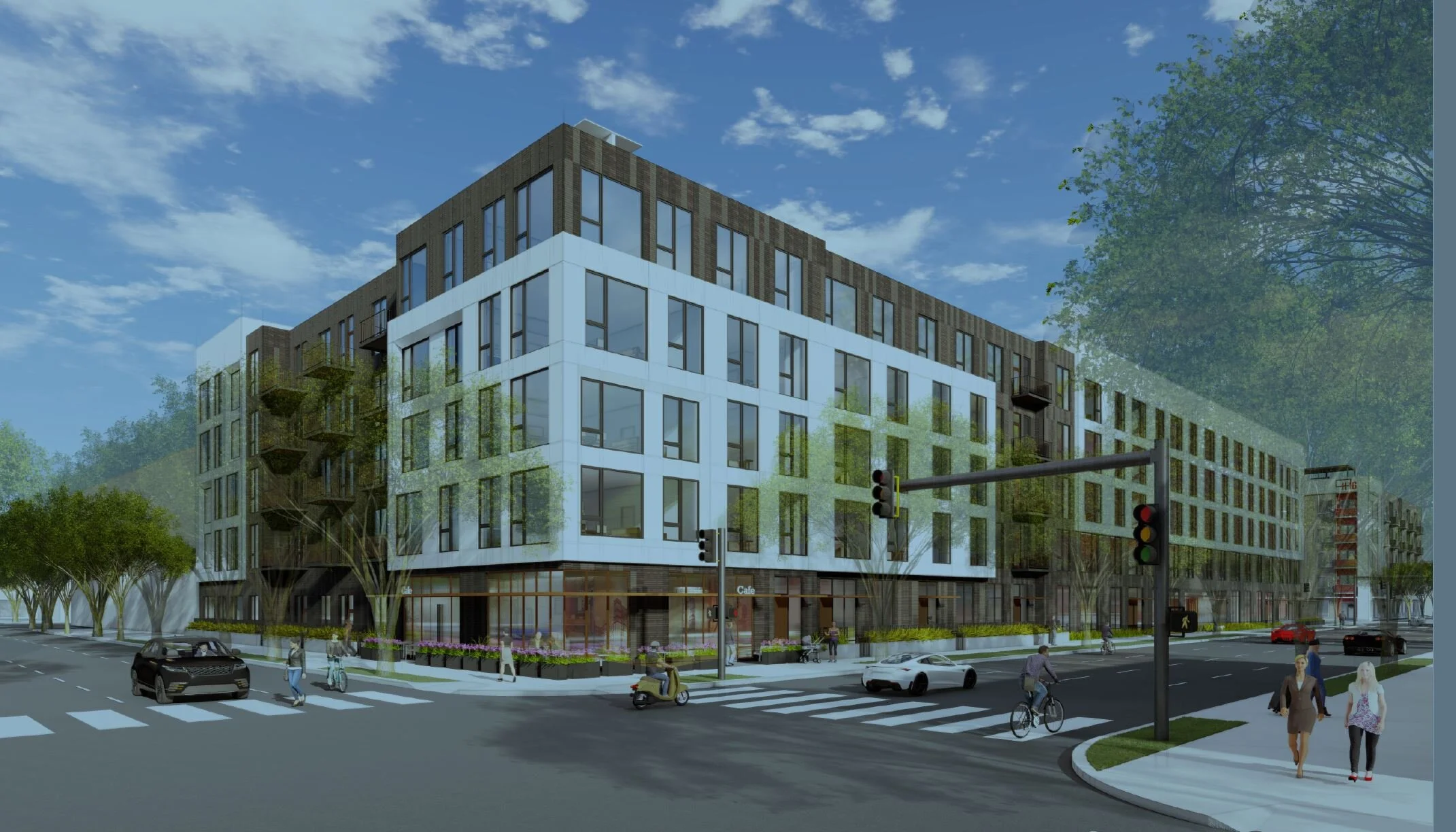Opportunity Zones draw new investment to neglected Sacramento properties
The historic Montgomery Ward building on K Street has been vacant for about two decades.
It has been about 20 years since the last tenant occupied the historic Montgomery Ward building at 830 K Street, but the distinctive red and white brick structure will soon reopen as an office building thanks to the federal Opportunity Zone program.
“It was because of the Opportunity Zone program that we were able to make this work and invest in this property,” said Ian Barth of Bauen Capital, a California investment fund that is rehabbing the 83-year-old former department store into modern office space.
“This will be a real win for the community,” Barth added.
The former Montgomery Ward building was one of the projects showcased by the City of Sacramento and the Sacramento Housing and Redevelopment Agency on Nov. 20 during a visit by Scott Turner, a former NFL player who now serves as executive director of the White House Opportunity and Revitalization Council, which oversees the Opportunity Zone program.
Mayor Darrell Steinberg with Scott Turner (middle) and Christopher Patterson, Region 9 Administrator for HUD.
In an address kicking off Turner’s visit, which included a tour of potential sites, Mayor Darrell Steinberg described Sacramento’s efforts to revitalize its downtown, build more housing and invest in overlooked neighborhoods throughout the city.
“Without the partnership of the federal government, we will only get so far,” he said. “I know we’re living in partisan times and it’s refreshing and good that we can actually work on this set of issues and that we can figure out how we can utilize Opportunity Zones to enhance what we’re trying to do here.”
“I know that if your agency really focuses on Sacramento this will be one of the shining lights around the country about how to get it done.”
Enacted into federal law as part of the 2017 tax bill, the Opportunity Zone program aims to spur investment in distressed areas across the United States by deferring or even eliminating capital gains taxes on a property’s appreciation as long as the investor holds it for at least 10 years. The program is based on bipartisan legislation championed by nearly 100 members of Congress, including Sens. Tim Scott, R-SC, and Cory Booker, D-NJ.
The City of Sacramento has 29 Opportunity Zone Census tracts. They range from downtown locations like K Street, the Railyards and the Waterfront to industrial areas and aging commercial corridors like Franklin and Stockton boulevards.
Developer Sotiris Kolokotronis said the program is helping attract more large institutional investors to town. He is using funding from Iowa-based Aegon Real Assets US to transform the former Clarion Hotel at 700 16th St. into 186 apartments and 3,000 square feet of retail space.
Kolokotronis said the requirement that properties be improved and held long term is a positive feature of the program because it attracts owners who will be committed to the community for many years rather than looking for a quick return.
Other projects expected to use the Opportunity Zone designation include the rest of the 800 block of K Street and the new Major League Soccer stadium planned for The Railyards north of downtown.
The program has recently come under criticism because of the participation of wealthy people pursuing upscale projects on land adjacent to low-income neighborhoods but technically within the same Opportunity Zone.
So far, Opportunity Zone investors in Sacramento have targeted neglected or derelict properties in and around downtown. City leaders are hoping the program can pique investor interest in projects proposed for the city’s aging commercial corridors like Franklin and Stockton boulevards.
Rendering of the housing and retail project that Sotiris Kolokotronis is building on the site of the former Clarion Hotel.






